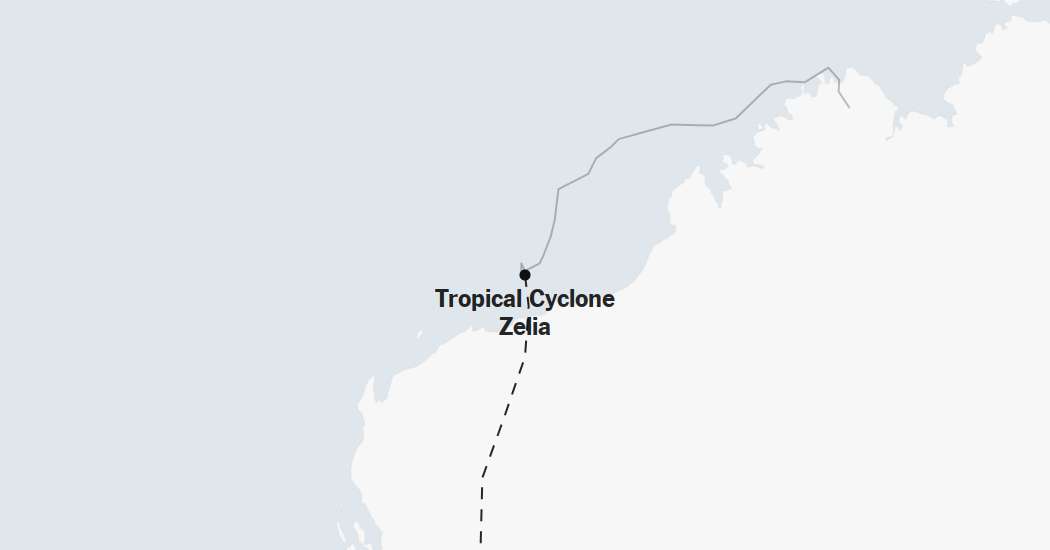
On early Friday (Australian Western Time), Cyclone Zelia intensified into a tropical cyclone over the Indian Ocean, as reported by the Joint Typhoon Warning Center.
With maximum sustained winds reaching 132 miles per hour, it would classify as a Category 4 hurricane in the Atlantic region.
All times indicated on the map are in Australian Western Time.
Source: The New York Times
Where is the rain expected?
Heavy rainfall and flash flooding can occur far from the center of the cyclone, with even less intense storms capable of causing serious flooding in low-lying regions.
What does the storm’s satellite imagery reveal?
Satellite images are instrumental in assessing a storm’s strength, size, and organization. A well-defined eye is likely to form as the storm intensifies, and a symmetrical appearance generally indicates that the storm is not facing significant weakening factors.
Approximately 25% of the world’s tropical cyclones develop in the Southern Hemisphere. These storms, classified as hurricanes in the Atlantic when wind speeds exceed 74 mph, are referred to as cyclones in this region. A notable distinction is that cyclones rotate clockwise in the Southern Hemisphere, unlike their Atlantic counterparts, which spin counterclockwise.
Areas affected by cyclones include eastern Africa, especially Madagascar, as well as the western, northern, and eastern shorelines of Australia and neighboring islands.
The cyclone season in this region is opposite to that in other parts of the world, typically starting in late October and continuing through May. Peak activity generally occurs in late February and early March, although specific timing can vary by region.
Sources and Additional Information
Tracking Map: The tracking information is sourced from the National Hurricane Center and the Joint Typhoon Warning Center.
Satellite Imagery: Images are provided by the National Oceanic and Atmospheric Administration and the Japanese Meteorological Agency through the Cooperative Institute for Research in the Atmosphere.
Precipitation Data: Rainfall forecasts and observed totals are from the National Weather Service, while the one-day forecast is sourced from the National Oceanic and Atmospheric Administration.









